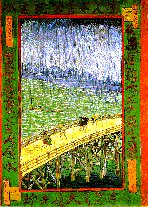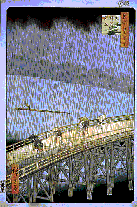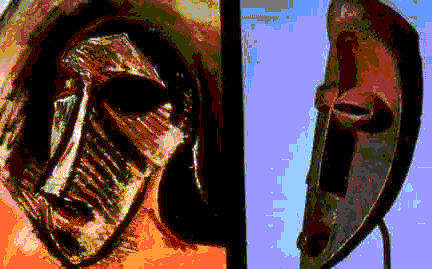|
Modernism and Appropriation of
Indigenous Culture
Modern western painting and sculpture has been influenced
by the art of indigenous peoples since its beginnings in 19th
century France. However, this influence goes beyond the simple
and well established ideas of Orientalism or Africanism. These
"exotic" styles had been around for centuries, and
were little more than poor parodies resulting from misunderstanding
and prejudice. However, in the 19th century, and into the
20th, western artists were using the art of specific indigenous
artists, and groups, as reference and source for material
for their own art.
As Impressionism emerged, artists began to look outside of
traditional sources for inspiration. The art of Antiquity,
the Renaissance, and the Baroque periods, lacked novelty .
Artists of the Impressionist group wanted something fresh;
they were looking for an art with an entirely different perspective.
Artists began to look toward Asia and the art produced there
as an influence on their new Impressionist style.
In 1890 an extensive exhibition of Japanese masters appeared
at the Ecole des Beaux-Arts, in Paris. At the same time, Vincent
Van Gogh frequented a shop owned by Samuel Bing. Van Gogh
was able to procure cheap Japanese prints. Certainly, Orientalism
was fashionable in Paris, and Van Gogh was influenced and
attempted to capitalize on this fad. He studied prints, and
appropriated elements of Japanese style that went against
the rules of perspective used to depict three dimensional
space which had been in use since the Renaissance. He copied
the subject matter, and composition, of some Japanese prints
explicitly .
Van Gogh essentially produced painted versions of Japanese
prints with, at least, the idea of selling them. One such
image is Bridge in the Rain, originally by Japanese print
maker, Utagawa Hiroshige, from his 1857 series One Hundred
Views of Edo.


Van Gogh's copy adds a decorative border but changes little
else. Under the guise of primitivism, this kind of I.P. theft
would prove indispensable to the evolution of modern painting.
As the revolutionary waves of Impressionism and Post-Impressionism
subsided artists looked for art styles as foreign to western
eyes as Japanese art had been. Artists like Picasso used African
masks in a similar fashion to the way that impressionists
used Japanese prints before him .

One can see by simple analysis of artifacts and Picassso's
work itself that he was influenced by specific masks. Artist
Franz Marc wrote, "I was finally caught up, astonished,
and shocked, by the carvings of the Cameroon people."
Matisse, Nolde, Kirchner, and even Picasso himself have commented
on the influence African art had on them.
Clearly cultural appropriation this far in the past can not
be remedied, and one would not have the work of artists like
Van Gogh, and Picasso compromised. However, if viewers can
recognize the influences of these artists one can at least
attempt to understand the theory behind these varied and interesting
sources for western art.
Good
link to site on American orientalism.
[Return to Top]
|

